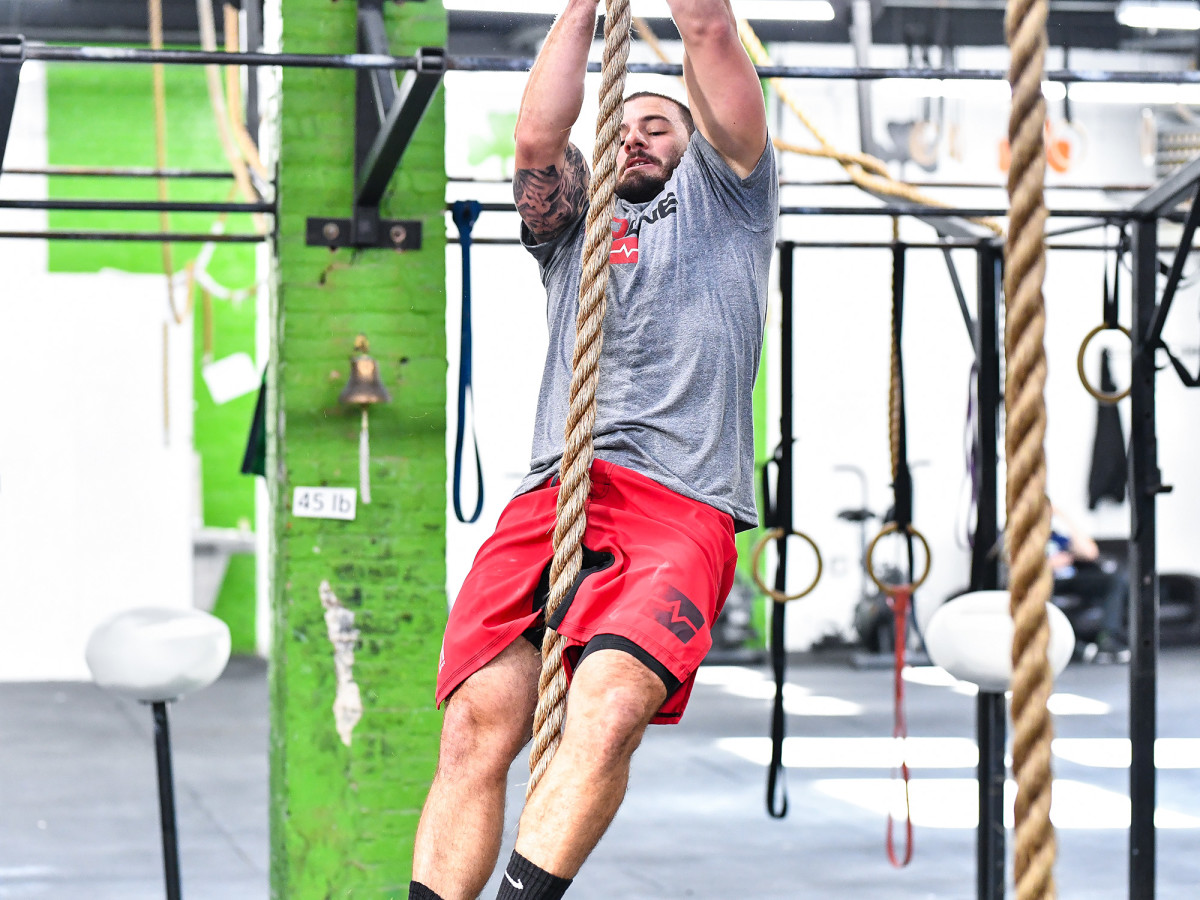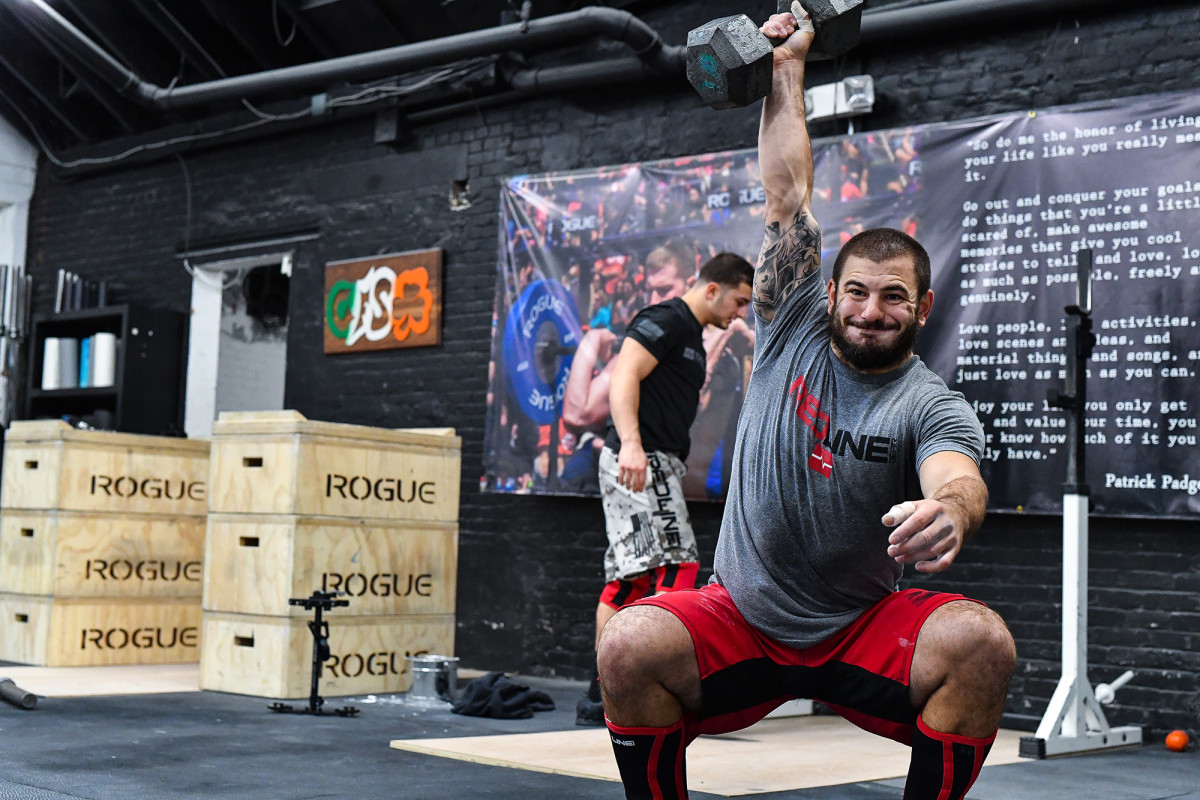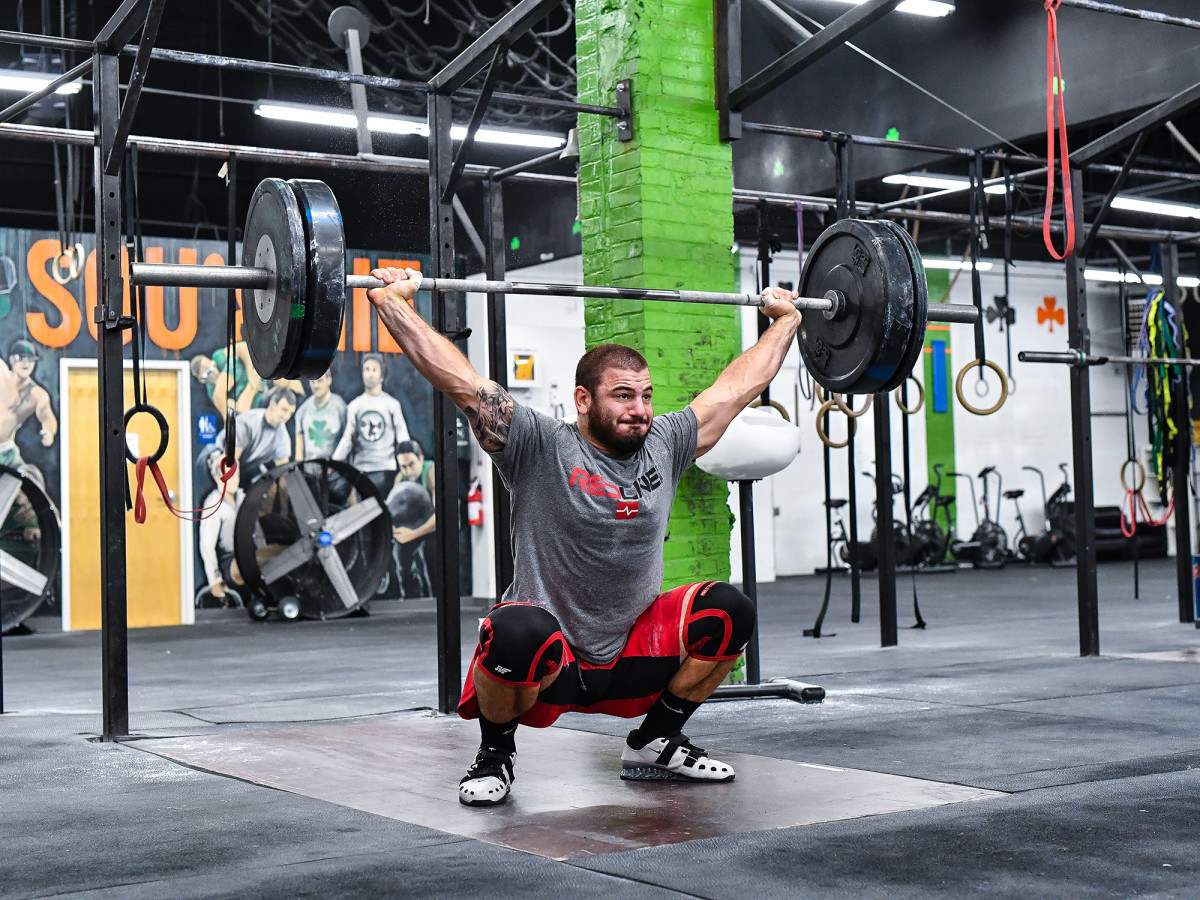Training with Mat Fraser: Inside the gym with the 2016 CrossFit Games champion

The brace didn’t work, the doctor explained gently. You’re going to need spinal fusion. You’ll never train seriously again. If you’re lucky, maybe you can go for a light jog.
Mat Fraser fought back tears. He had spent four months trapped in a smelly, sweaty, clear plastic corset that imprisoned him from hip to chest, and for what? Sprawled in a chair in the antiseptic office, he tried to pay attention as the orthopedist explained to him that the break in his back hadn’t healed, and wouldn’t heal unless doctors attached his fractured vertebra to the one above it. Fraser, then 19, had spent the better part of his teenage years working out a dozen times a week in the hope of making the U.S. Olympic weightlifting team, but a fused spine would never be able to handle that kind of torque. It was over.
It wasn’t, of course. Fraser, now 26, would go on to win the 2016 CrossFit Games in one of the most dominating performances in the history of the sport, but in the summer of ’09 he was no champion. He was a kid, a kid who was unexpectedly facing the worst news of his life, and he was scared and devastated and broken.
Physical activity had always come naturally to Fraser. His parents, Don Fraser and Candace Jones (now Candace Fraser), finished 14th at the 1976 Olympics as the Canadian pairs figure skating team, and they encouraged their younger son’s wild side. Mat was swimming before he was a year old, water-skiing at 18 months, downhill at two years. When they, and his older brother, gathered around the TV in their Colchester, Vt., house, it wasn’t uncommon for family competitions to break out. During commercial breaks, “we would clear out the coffee table in the living room and all four of us would kick up into a handstand and see who could hold it the longest,” Fraser says now, grinning. “And then it was like, who can touch their shoulder in a handstand, who can go up the stairs in a handstand—stuff like that escalated.”
Sports tech in 2017: What's next after wrist-worn wearables and fitness trackers?
He entered a ski-jump competition on a lark at 15 and won it with a double backflip, which he’d never even attempted before. One day around the same time, a neighbor called Don over. “I don’t want to interfere in what goes on in your house,” the man said, “But I don’t think you’re aware of it: Mat is climbing onto the roof and jumping onto the trampoline and into the pool.”
“I said, ‘Oh, thanks,’” Don says now. He laughs. “I was aware of it.”
And here as well as genetically Fraser probably benefited from his parents’ legacy. They too had flung themselves through the air as children to the horror of nearby adults, so they knew a kindred spirit when they found one.

“We understand when somebody has that kinetic sense and understanding of where their body is,” Candace says. “We totally saw that in Mathew.”
He fooled around with weightlifting at 12 to give himself an edge on the middle-school football team, and quickly discovered his future was not on the gridiron. By the time he was 14, Mat had decided to make participation in the Games a family tradition. With his eyes on Rio 2016, he drove cross-country on his high school graduation day in ’08 to the Olympic Training Center in Colorado Springs, Colo.
A year and a half later, a month before the junior world championships in Romania, he did a clean and heard a snap. He dropped the bar and collapsed, but within days had convinced himself that it was too late to withdraw and downed “a couple of bottles of ibuprofen,” he says. Barely able to walk, he creaked and groaned his way into 15th place in a field of 16. Upon his return to the States, he insisted on an x-ray, which revealed two clear breaks in his L5 vertebra, the piece of the spine closest to the pelvis. After those four months in the brace, he got the news that left him speechless that day in Colorado.
Fraser frantically searched for alternatives and came upon Robert Bray, a neurosurgeon who was working on an experimental surgery that would involve re-breaking the spine and inserting a protein sponge to stimulate bone growth and help it heal properly. If Fraser could get himself to California, Bray would do the procedure for free—but the most he could offer was a 50/50 chance of recovery. That was all Fraser needed to hear. He had the operation on Christmas Eve and spent the holiday—and the following week—in a hotel, unable to move, sleeping up to 20 hours a day.
It took a year of freezing every time he heard a pop, of watching his former teammates achieve new personal records and make the national team, of wondering if the surgery had worked, until he could trust his back again. Nearly 18 months after the injury, he placed third at the 2010 American Open, moving nine pounds more than he had in Romania. He had his body back.

But he found something else slowly disappearing. Shortly after the surgery, he had moved to the Olympic Education Center in Marquette, Mich., which offers college courses, because he realized he was staking everything on an athletic career that could be over in the twist of a torso. But he had left his friends behind, and the classes were uninspiring. It was all training all the time. He attacked every workout with the faces of his doubters flashing through his mind; he would go weeks without thinking about how much he loved weightlifting.
“I was training with a resentment every day,” he says now. “And for me that could only work for so long. Once I started succeeding and doing well in the sport again and I still had that resentment, that love of the sport turned to hate. I realized, I’m not enjoying this. I lost my love for the sport I was in. So I just realized, Okay, time to move on to that next stage of life.”

So he packed up and went home to study engineering at the University of Vermont. Feeling out of place as a 22-year-old among freshmen, he wandered into Champlain Valley CrossFit one afternoon hoping they’d let him use their weights. After a few weeks of pestering, Fraser agreed to try a CrossFit workout, which generally involve interval training made up of exercises focusing on strength and others requiring cardiovascular output. He paced the field in the kettlebell swings, but was shocked to see a man in his late 50s blow by during the 400-meter run that followed. How out of shape am I, he wondered, that I’m getting smoked by that guy?
Initially he started competing just to make a few bucks. At his first event, he remembers, “I won it, and the first place prize is $500 cash, and I was blown away. I couldn’t tell you any time I ever had $500. So after, I was like, Hey, are there competitions like this often?”
Fellow CrossFitters began referring to him as Happy Gilmore, because he’d show up in his 1987 Oldsmobile sedan, make a few hundred dollars and drive home. But the more success he had, the more he wondered if there was something there. He refused to quit school and train full-time—like a jilted lover, he was afraid to devote his whole heart to another sport that could easily leave him alone and in pain—but he started training his weaknesses.
Training with Ken Roczen: Breaking the mold of what it means to be a motocross athlete
Perhaps the most unusual feature of CrossFit is that participants train for competitions without knowing what they will entail. At major events such as the CrossFit Games, sometimes the governing body doesn’t release the workouts until two weeks beforehand; sometimes it waits until the athletes are standing on the field. The details are limited only by the imagination of the panel. So all an aspiring CrossFitter can do is try to be as well rounded as possible. For Fraser, that means working on everything from strength to agility to endurance to gymnastics. He largely creates his own training plan, which he implements at Champlain Valley, but he makes monthly 200-mile drives to CrossFit New England, in Natick, Mass., where he and coach Ben Bergeron adjust his technique and discuss his mental approach.
“I’m not trying to break a four-minute mile,” Fraser explains. “I’m not trying to squat 800 pounds. I’m trying to run a five-minute mile and squat 500 pounds.”

That uncertainty is “a pain in the ass,” he admits, but something surprising happened when Fraser let go of the lifestyle that meant everything to him: He found something he loved more.
“The two Olympic weightlifting events are the snatch and the clean and jerk,” he says. “So 90% of the time, you’re practicing the snatch and the clean and jerk. With CrossFit, it’s different all the time. It’s fun.”
The realization came as a shock: He’s grateful he hurt himself. That day in Colorado wasn’t the end of anything. It wasn’t the worst day of his life at all.
“At the time, of course I’m wishing for something different,” he says. “But in the end, I’m like, thank God things worked out the way they did.”
